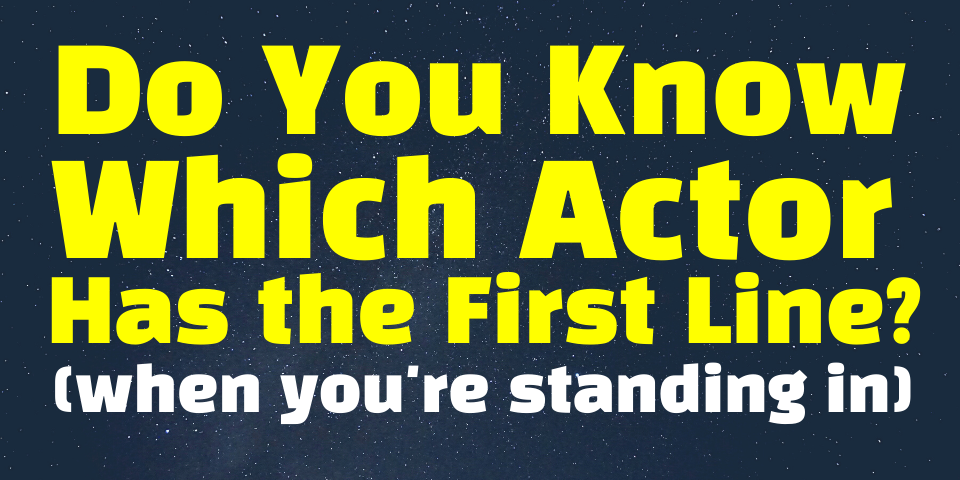From time to time, you’ll encounter interesting situations as a stand-in on a TV or film set that are outside the “norm” of stand-in work.
Most stand-ins basically stand on marks and go through the general motions of their respective actors in a scene, while the crew sets up a shot with them.
But on occasion, different things will be asked of stand-ins that deviate from this “norm.”
This post covers one of those unusual things asked of stand-ins: “Which actor has the first line?”
“Which Actor Has the First Line?”
After a marking rehearsal, stand-ins will often occupy the first marks of their actors while the director and director of photography work out the shot.
On occasion, who the first actor to talk in a scene is may warrant where the camera starts a shot. If Actor A and Actor B are standing far from each other, and if the scene calls for a shot with the camera moving from one actor to the other, knowing which actor speaks first may dictate where the camera starts.
While the answer to the question of “Which actor has the first line?” is not ultimately the stand-in’s responsibility — in other words, the whole production of a shot does not hinge on the stand-in’s authority on this matter — a stand-in who knows the answer to this question can benefit a production a number of ways.
Benefits of Knowing the Answer
Primarily, if the production regularly asks stand-ins this question (or at least from time to time), a stand-in can demonstrate more value for a production (and for the director or director of photography) in knowing the answer to this question readily.
Such a stand-in helps the key personnel move along the production — mainly in working out the shot. Of course, in TV and film, time is money to a large degree, so the faster key personnel have the answer to the question of which actor has the first line, the sooner they can set up a shot, and the more money they save a production from that time savings.
Secondarily, a stand-in case raise his or her professional profile in knowing the answer to the question. A stand-in who is knowledgable about a scene and key information for shooting it tends to demonstrate a more intimate investment in and commitment to a production.
It’s hard to quantify exactly how that commitment translates, but more respect as a stand-in can have benefits down the line or over time compared to stand-ins who demonstrate less commitment. This may mean being requested by production to come in, being remembered for future productions, or being plucked from a job as a background actor to stand in.
A Different Answer?
The more important answer to the question “Which actor has the first line?” may actually be not the first line, but the first action!
For example, if Actor A speaks before Actor B, but if Actor A’s first line is in reaction to something Actor B is doing, it may be more important to start a camera on Actor B. So, in such a case, sharing which actor speaks first may not answer the question of where to aim the camera first.
A stand-in might respond by saying, “Actor A speaks first, but Actor B has the first action.” Some different response may be better warranted, too. You have to figure these things out in the moment!
Feel It Out
Whether to answer the question or not of which actor has the first line in a scene may not even be your responsibility at all, especially if the question is asked out in the open and maybe not directly toward you.
But a quick reply from a knowledgable stand-in may count as much as an answer from an assistant director or a script supervisor. Feel it out for yourself and see what happens next!
Do you make a point of knowing which actor has the first line in a scene in which you stand in? Have you seen knowing the answer has helped you in your work as a stand-in? Share your thoughts in the comments below!







Leave A Comment